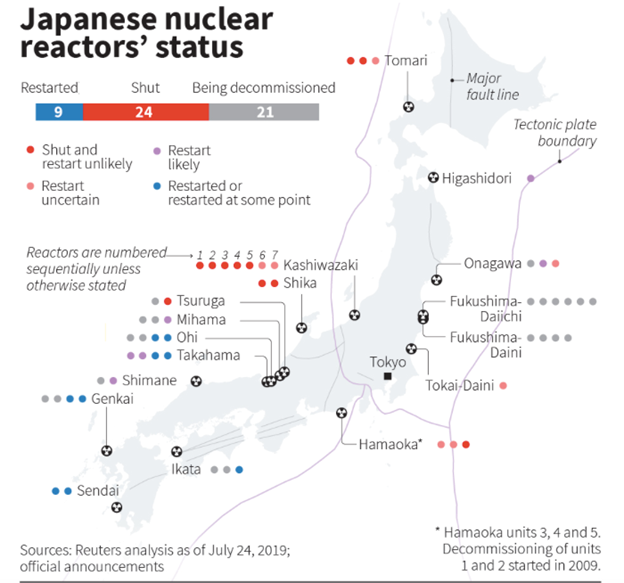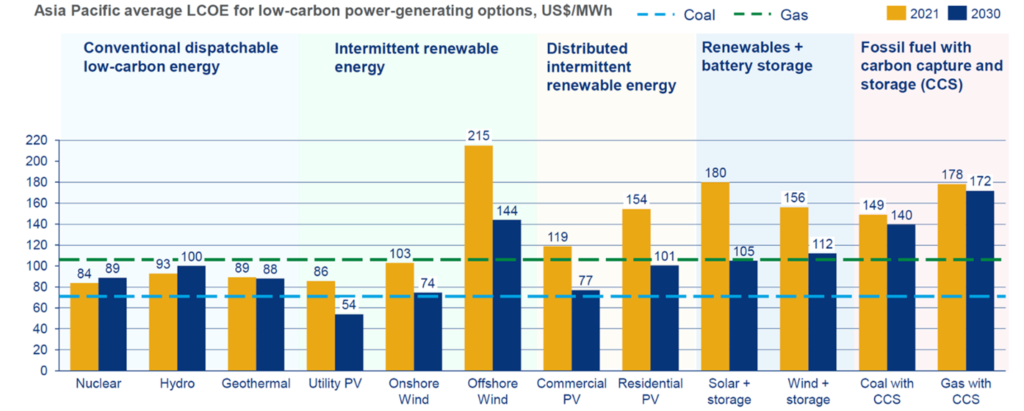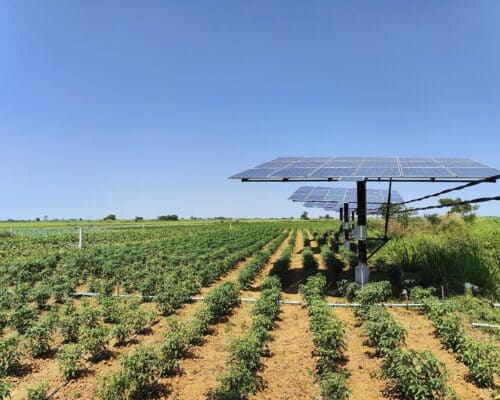Fossil Fuel Imports Risk Japan’s Energy Security
J. Henning Buchholz / Shutterstock.com
19 April 2023 – by Eric Koons
Despite its 2050 climate goals, Japan still relies heavily on (mostly imported) fossil fuels for energy and electricity generation. In 2021, its emissions accounted for 2.88% of global GHG emissions.
Transitioning its economy to renewable energy sources should be a priority. Still, a lack of commitment to give up coal and slow renewable capacity generation has cast doubt on the country’s ambition to meet its climate targets. Developing a robust renewable energy grid and investing in solar and wind power is costly and time-consuming. However, it is a necessary process that Japan can’t afford to lag on.
What Is the Main Source of Energy in Japan?
The main sources of energy in Japan are coal, oil and natural gas. As these carbon-heavy energy sources power everything, the country heavily relies on foreign entities to power its society. While this hasn’t been a major concern from a historical perspective, recent events like the Russia-Ukraine war and the COVID-19 pandemic show this strategy’s weakness.
Over half of the country’s greenhouse gas emissions come from 130 factories and facilities, while electricity generation from 78 thermal power plants is responsible for almost a third of its total emissions.

Japan needs to decarbonise its energy mix further, as only 14% of its energy comes from low-carbon energy resources. This is far from the 36% to 38% target the country is aiming for by 2030. Without significant near-term changes, it will be impossible for the country to meet its medium and long-term emissions reduction and energy transition goals.
Around 85% of Japan’s energy comes from imported non-renewable energy sources. Coal and oil comprise around 27% and 37% of the energy share, respectively. Natural gas represents around 21%, and nuclear power has declined since the Fukushima incident.
Japan Looks to Revive Nuclear Power Generation
After 2011, Japan shut down all 33 of its nuclear power plants, cutting the country’s total energy generation by 30%. Since then, only 10 reactors have been given clearance to restart, accounting for around 3% of the country’s energy. However, due to economic concerns about importing fossil fuels, nuclear energy is starting to regain favour with government officials. The country recently set a new target for nuclear to account for up to 22% of the country’s energy mix by 2030.

However, developing nuclear plants is an expensive and time-consuming process, and a global lack of innovation in the industry has led to a stagnant levelised cost of energy (LCOE) for nuclear. On the other hand, the LCOE of renewables is steadily falling. This raises the concern that energy from nuclear facilities is losing its competitiveness over renewables, creating a risk of stranded nuclear assets.
Japan is better off refocusing its efforts on expanding its renewable energy capacity to meet its 2030 and 2050 climate targets.
Solar Power Share Slowly Increases
Solar energy makes up about 4.6% of the total energy generation capacity among renewables. Hydropower makes up 4.12%, wind energy makes up 0.44% and other renewables, such as geothermal and biomass, make up 2.29%. With a total solar generation capacity of 74 GW, the country produced 86 TWh of energy in 2021 from solar. This is a 7 TWh increase from 2012.

Considering the trend of increasing solar energy entering the grid, this is a positive sign. However, experts warn that Japan needs even bolder steps to achieve its 2050 climate target and a fully decarbonised economy. More policies, greenwashing prevention practices and storage solutions are needed to support the emerging solar industry.
What Is Japan’s Energy Crisis?
Although Japan’s energy delivery is stable, 77% of Japan’s energy sources are imported. This leaves the country highly vulnerable to foreign entities and fuel price fluctuations.
While this has been an ongoing issue, it came to a head in 2022. Fossil fuel prices hit record highs, the value of the Japanese yen was falling and Tokyo was hit by one of the worst heatwaves on record. This drove the country’s energy output dangerously close to levels that would cause rolling blackouts. As a result, the government asked the nation to reduce energy use.

The issue is likely to appear again unless there is a reduction in fossil fuel imports. As the world’s third-largest economy, this type of energy insecurity is problematic, as a complete energy collapse of the country could cause a ripple effect across global markets.
Japan’s Slow Progress Impacts Global Climate Progress
Japan needs to rapidly decarbonise its energy system to pursue energy security and global climate commitments. However, many warn that a lack of detailed plans and an unwillingness to phase out fossil fuels raises doubts as to whether Japan will reach its targets. Increasing its renewable energy share by the end of the decade will be a challenging goal to achieve and requires immediate action.
Coming into the G7 meeting this year in Hiroshima, Japan needs to step up its climate commitments with tangible plans to decarbonise. The ongoing smoke and mirror policies and lack of concrete action are not only a concern for Japan but also for global climate efforts.
by Eric Koons
Eric is a passionate environmental advocate that believes renewable energy is a key piece in meeting the world’s growing energy demands. He received an environmental science degree from the University of California and has worked to promote environmentally and socially sustainable practices since. Eric’s expertise extends across the environmental field, yet he maintains a strong focus on renewable energy. His work has been featured by leading environmental organizations, such as World Resources Institute and Hitachi ABB Power Grids.
Read more




